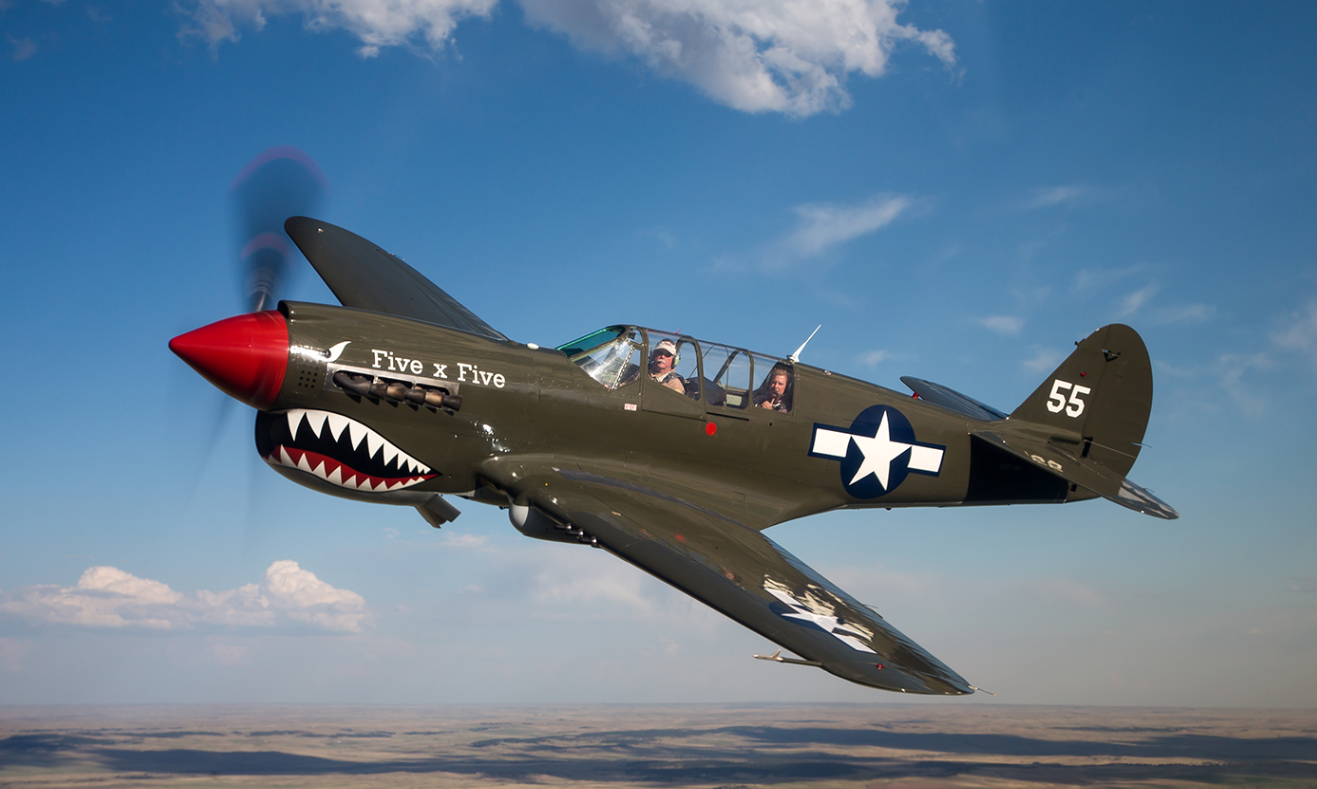
Among the famous aircraft of World War II, the Curtiss P-40 Warhawk is one of them—and not because it was faster or more advanced, but because it was rugged, resilient, and unbreakable in Allied pilots’ hands. Its shark-mouth nose art was famous, but the real fame of the Warhawk was the ruggedness and reliability that allowed it to endure the harsh realities of combat.

The P-40 developed from the earlier P-36 Hawk in the late 1930s, when technology was changing dramatically in the field of aviation. Curtiss designers adapted the design with a liquid-cooled Allison V-1710 engine to create a fighter that could be quickly mass-produced, withstand combat damage, and be produced in large numbers. It wasn’t a cutting-edge aircraft, but it was exactly what the Allies needed right away in the early stages of the war.

Under combat, the P-40 performed best at low to mid-altitudes but struggled at more than 15,000 feet due to its single-stage supercharger. Its maximum speed varied between 340 to 378 mph depending on the model, and its climb rates were typically between 1,800 to 3,300 feet per minute.

The plane was heavily armed, normally carrying four to six .50 caliber machine guns, and even carried bombs or external fuel tanks for longer flights. Where the P-40 truly shone, however, was in survivability. Even severely damaged Warhawks still managed to return home, giving pilots a tactical edge in dogfights against nimble enemies like the Japanese Zero.

The Warhawk performed well in a number of theaters of operation. In North Africa, it was the Allies’ primary fighter until the introduction of newer aircraft such as the Spitfire Mk IX. The Tomahawk and Kittyhawk variants were flown with great success by pilots Neville Duke and Clive Caldwell.

In the Mediterranean, several U.S. fighter groups, as well as the Tuskegee Airmen, operated P-40s, claiming hundreds of enemy aircraft collectively.

In Asia, the P-40 demonstrated its ruggedness in adverse conditions within the China-Burma-India theater of operations and comfortably filled the bill in the Pacific, where Australian and New Zealand units demonstrated that it could match Japanese aircraft even in dogfights. Even the Soviet Union made use of P-40s through Lend-Lease, concluding that they performed well in low- to mid-altitude fighting when their performance weaknesses did not become so severe.

Against the Luftwaffe’s Messerschmitt Bf 109, the P-40 was at a disadvantage in speed, climb, and ceiling. The Bf 109 could reach 39,000 feet and 648 km/h, while the P-40 reached a maximum of around 29,000 feet and 589 km/h. However, the Warhawk’s higher airframe weight and self-sealing fuel tanks often gave it the survivability edge.

Ultimately, results were highly dependent on pilot skill. As German ace Hans-Joachim Marseille accumulated P-40 kills, Allied pilots like James “Stocky” Edwards demonstrated that clever technique and aggressive maneuvering could make the Warhawk a formidable foe.

Curtiss made a final effort to modernize the P-40 with the XP-40Q, a bubble canopy, clipped wings, and a two-stage supercharged engine capable of 422 mph at 20,000 feet. Sounds good on paper, too bad it was too late to alter the Warhawk’s mission, for aircraft like the P-51 Mustang and P-47 Thunderbolt had already taken leadership roles. The XP-40Q was cancelled, and the Warhawk program was ended.

The P-40 Warhawk was never a technologically advanced aircraft in World War II, but it found its place with reliability, longevity, and the essential tasks that it carried out when the Allies needed it most. It filled gaps in air defense, flew in diverse theaters, and gave tens of thousands of pilots an aircraft upon which they could depend. It may not have had the panache of some of its contemporaries, but the Warhawk’s endurance, visibility, and persistence ensured it left an indelible mark on history.
